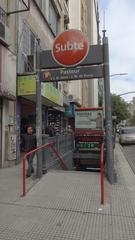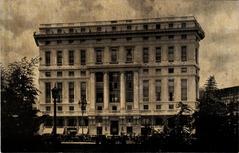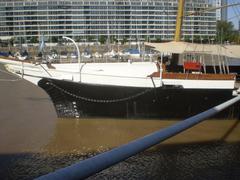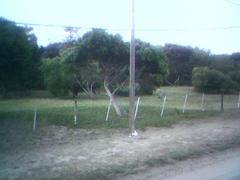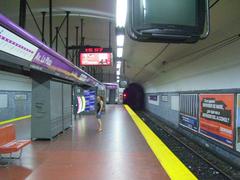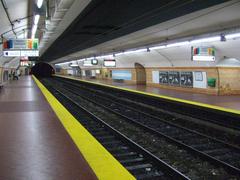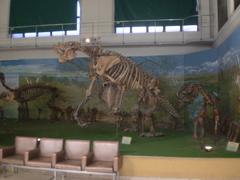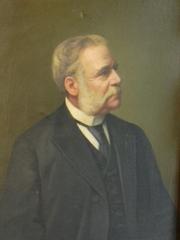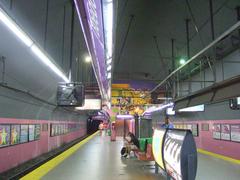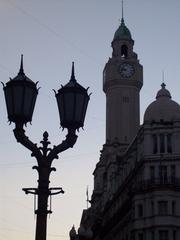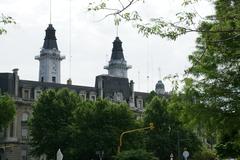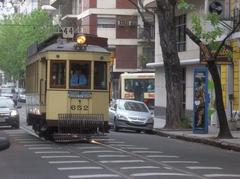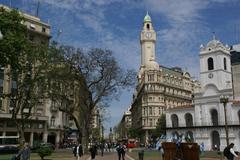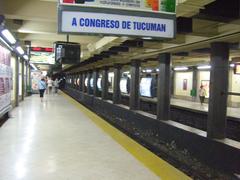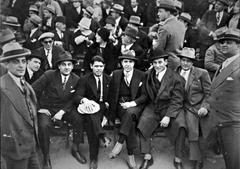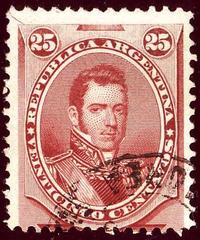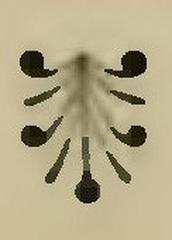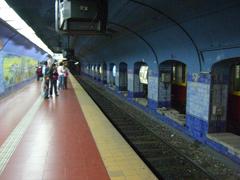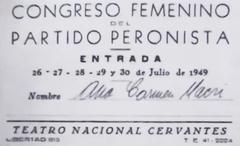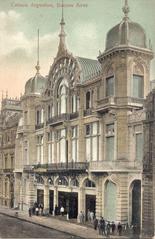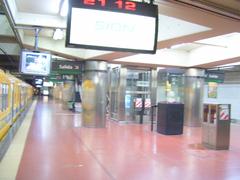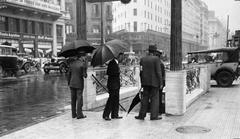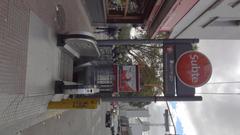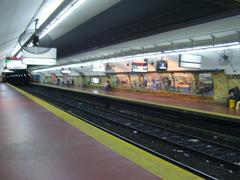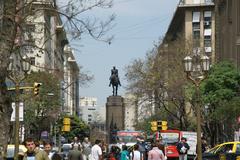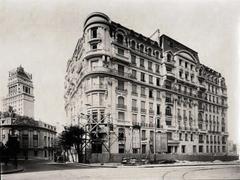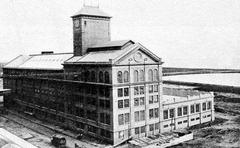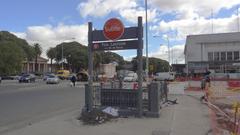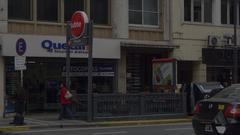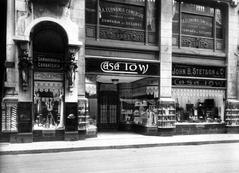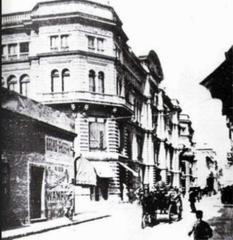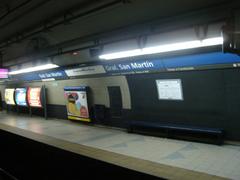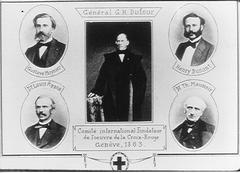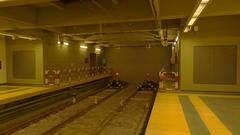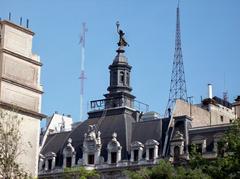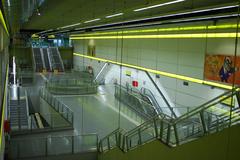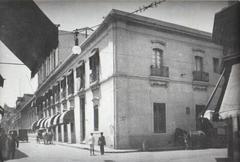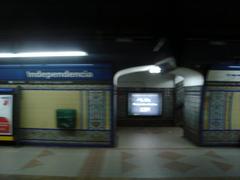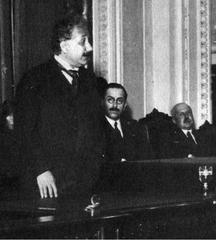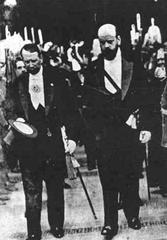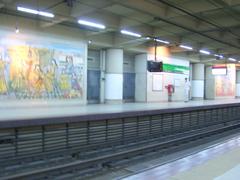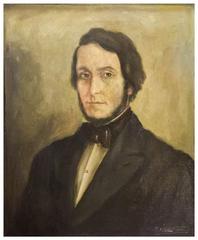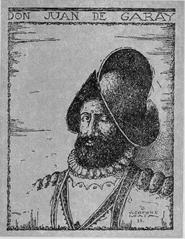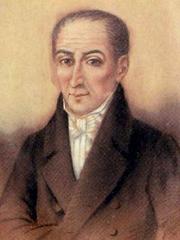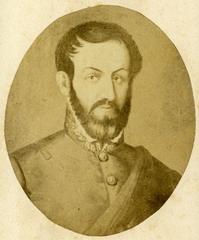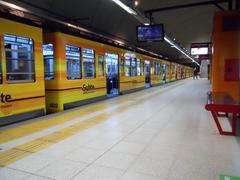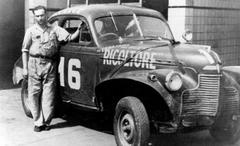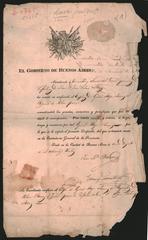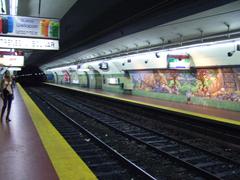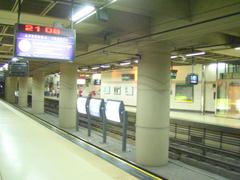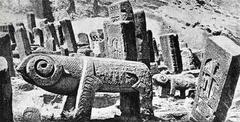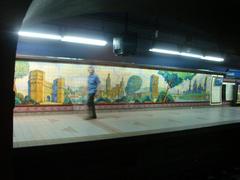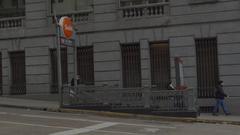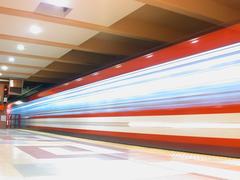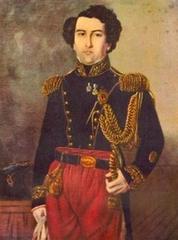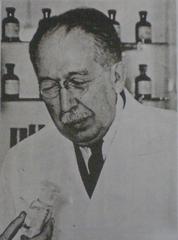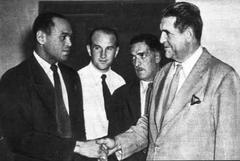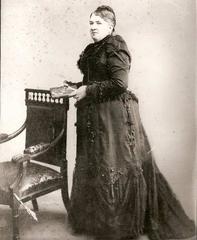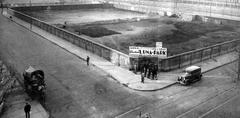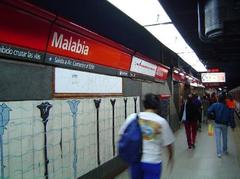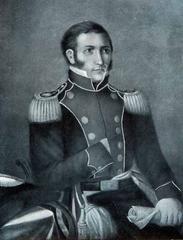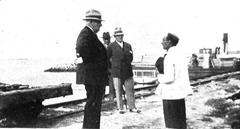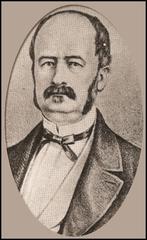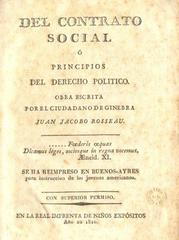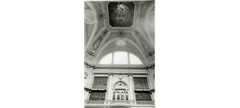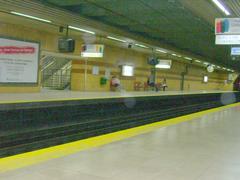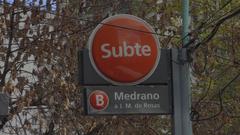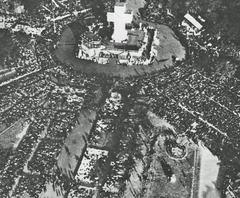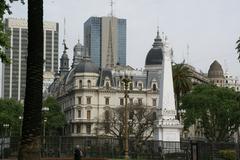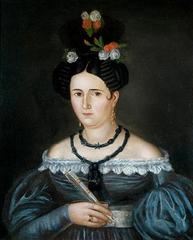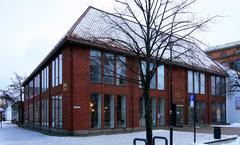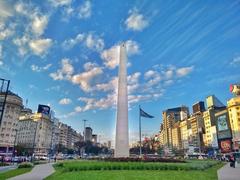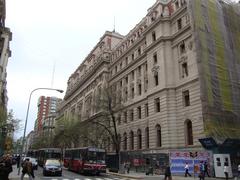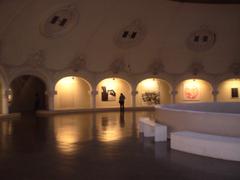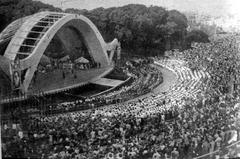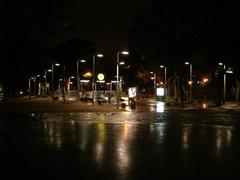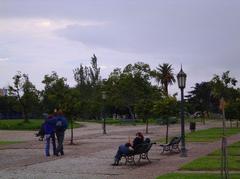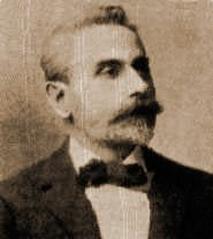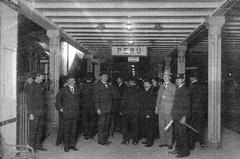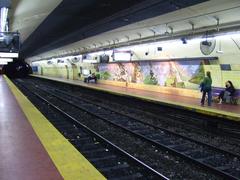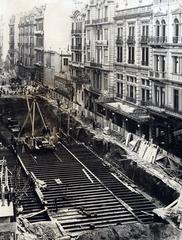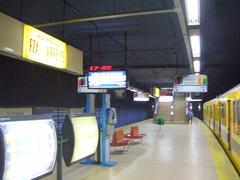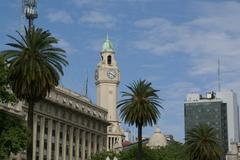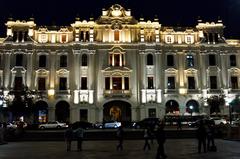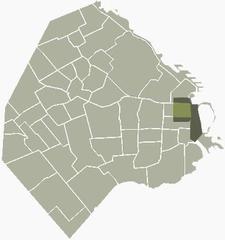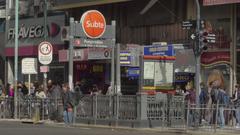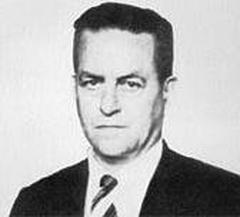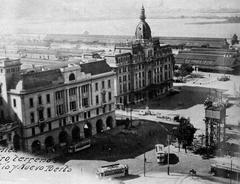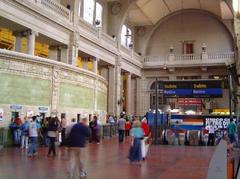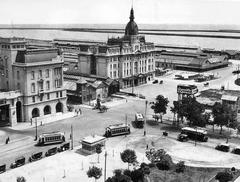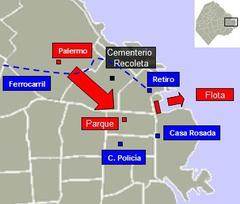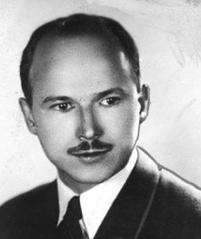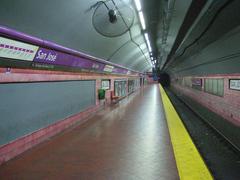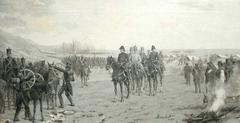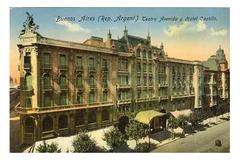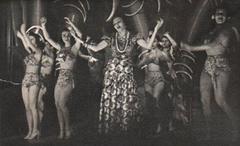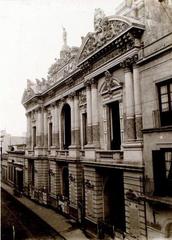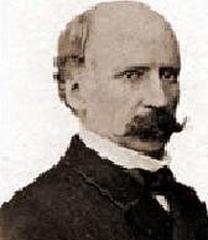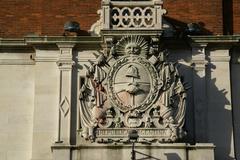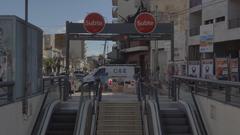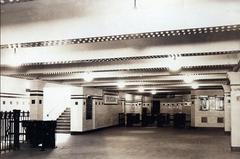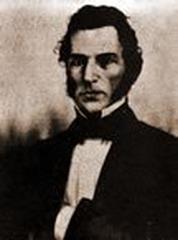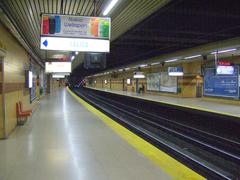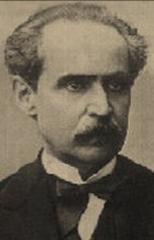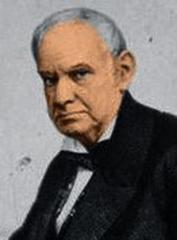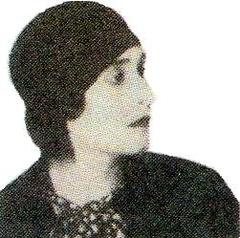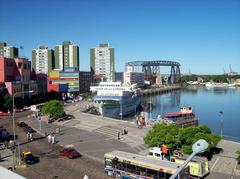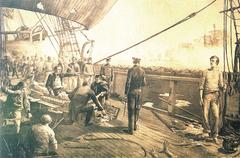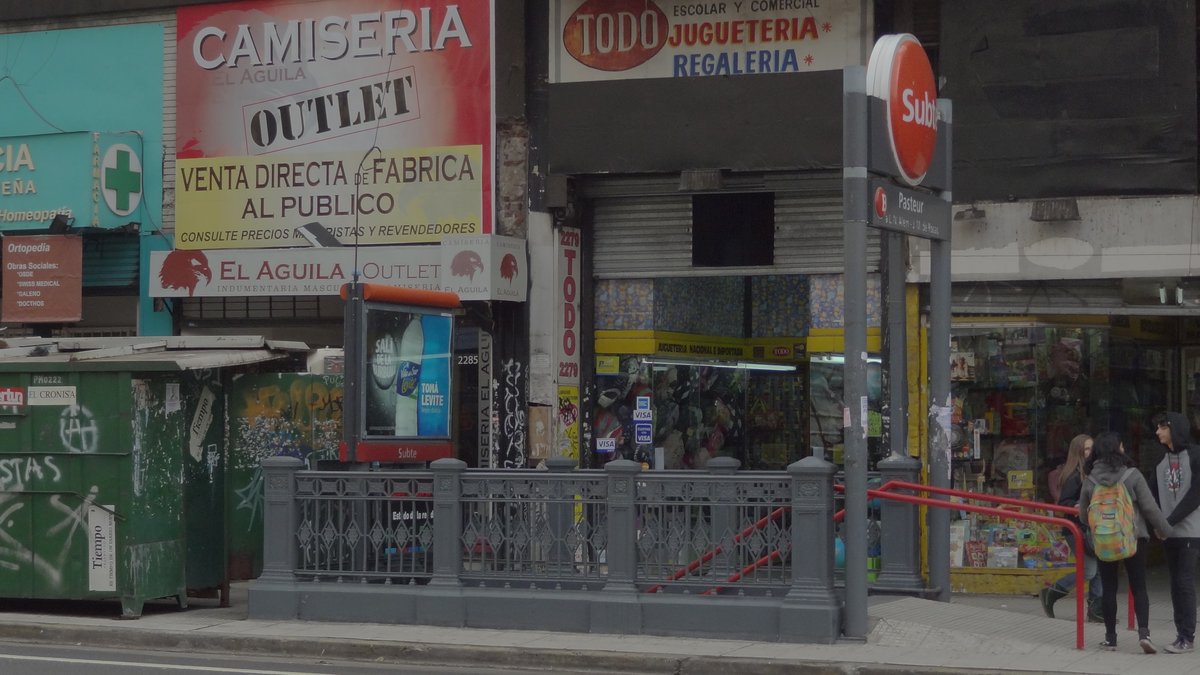
Complete Guide to Visiting Pasteur-AMIA in Buenos Aires: Tickets, Hours, and Historical Insights
Date: 15/06/2025
Introduction
Nestled in the vibrant Balvanera neighborhood, Pasteur-AMIA station is more than a subway stop—it’s a living memorial honoring the victims of the 1994 AMIA bombing and a testament to the resilience and cultural vitality of Argentina’s Jewish community. This guide provides in-depth historical context, details on memorial features, practical visitor information, and an overview of the broader Jewish heritage in Buenos Aires. Whether you are a history enthusiast, a cultural traveler, or a local resident, the Pasteur-AMIA station offers a profound and meaningful experience.
The 1994 AMIA Bombing: Historical Context
On July 18, 1994, Buenos Aires was the site of Argentina’s deadliest terrorist attack when a car bomb detonated outside the Asociación Mutual Israelita Argentina (AMIA) building at Pasteur 633, killing 85 people and injuring more than 300. The attack not only devastated the Jewish community but also struck at the heart of Argentina’s multicultural society.
This tragedy followed a 1992 attack on the Israeli Embassy, and both incidents were linked to Hezbollah operatives with alleged Iranian support. Despite decades of investigation, justice remains elusive as no convictions have been made in the AMIA case. The event has become a symbol of both loss and the ongoing pursuit of justice in Argentina.
(U.S. State Department; The Daily Beast)
The Jewish Community in Balvanera and AMIA’s Role
For over a century, Balvanera—and particularly the Once district—has been a hub of Jewish life in Buenos Aires. By the early 20th century, the area was home to a thriving community with synagogues, schools, cultural centers, and businesses. The AMIA, established in 1894, became the central institution for Jewish social, cultural, and charitable activities.
The 1994 bombing targeted not just the Jewish community but the fabric of Argentine society itself, affecting people from diverse backgrounds and underscoring the nation’s multicultural identity.
Creation of the “Corredor de la Memoria” (Memory Corridor)
In response to the tragedy, Buenos Aires and the Jewish community developed commemorative spaces to honor the victims and foster public memory. The most significant is the transformation of the Pasteur subway station—just 200 meters from the AMIA building—into Pasteur-AMIA, a living memorial.
The concept of a “corredor de la memoria” began in 1999, culminating in 2015 with the station’s renaming and the installation of memorial artworks and interactive displays. The space serves as both a functional transit hub and a public site of remembrance, reflection, and education.
Pasteur-AMIA Station: Features of a Living Memorial
Pasteur-AMIA station is a unique “Espacio de la Memoria” (Space of Memory) that integrates art, history, and technology:
- Murals and Artworks: Over 25 artists, including renowned cartoonists and muralists, have contributed ceramic murals and paintings. These works depict the tragedy, the pursuit of justice, and the enduring strength of the community.
- Permanent Clock: A clock set to 9:53 a.m.—the exact moment of the bombing—serves as a stark reminder.
- Interactive Displays: Digital installations, such as touchscreens and a display case with a twisted typewriter from the rubble, allow visitors to engage with the story of the victims and share messages.
- Electronic Calendar: An electronic display counts the days since the case remains unsolved, underlining the ongoing call for justice.
(The Daily Beast; La Nación; Times of Israel)
Visiting Pasteur-AMIA Station: Hours, Tickets, and Access
- Location: At Avenida Corrientes and Pasteur Street, on Line B of the Buenos Aires subway system.
- Visiting Hours: Monday–Friday 5:30 a.m.–11:30 p.m.; Saturday/Sunday 6:00 a.m.–10:30 p.m. (verify for updates).
- Tickets: Standard subway fare via SUBE card (no additional memorial fee). Cards can be purchased at kiosks or subway stations.
- Accessibility: Elevators, ramps, and Braille signage ensure access for all visitors.
Getting There and Local Tips
- Subway: Take Line B to Pasteur-AMIA.
- Bus: Multiple lines serve Avenida Corrientes and Pasteur Street.
- Nearby: Kosher restaurants, Jewish heritage sites, theaters, and the Fundación IWO are within walking distance.
For fare and transportation tips, visit (All About Buenos Aires: Transportation Guide).
Commemorative Initiatives Beyond the Station
- 85 Memorial Trees: Each tree along Pasteur Street represents a victim of the bombing.
- Murals by Hospital de Clínicas: Large-scale artworks near the hospital honor the rescue efforts and ongoing search for justice.
- Plaza Memorial AMIA: Established on the site of the destroyed AMIA building, this green space invites public engagement and remembrance.
(Jewish Tour Buenos Aires; La Nación)
Restoration and Preservation Efforts
Recent efforts have focused on restoring and preserving the station’s murals and installations, many of which have suffered from time and vandalism. These initiatives ensure the space remains a respectful and vibrant site for memory and education.
The Broader Jewish Heritage in Buenos Aires
Pasteur-AMIA station is part of a network of Jewish heritage sites, including synagogues, museums, and cultural centers. Guided tours explore the area’s history, while the neighborhood’s businesses, markets, and eateries offer a glimpse into the ongoing cultural vibrancy of Buenos Aires’ Jewish community.
(Buenos Aires Tourism; Jewish Tour Buenos Aires)
The AMIA Memorial: Architecture and Symbolism
Near the rebuilt AMIA building at Pasteur and Viamonte, the AMIA memorial includes a solemn wall inscribed with the names of the 85 victims and integrates elements from the original building’s façade. Along Pasteur Street, “stolpersteine” (stumbling stones) mark where victims were found, making remembrance part of daily urban life.
Annual Commemorative Events
Every July 18, the AMIA memorial hosts public ceremonies attended by survivors, families, officials, and international dignitaries. The 30th anniversary in 2024 included an unveiling of an international document on combating antisemitism and speeches by world leaders.
Permanent Exhibitions and Educational Features
Inside the AMIA building, permanent exhibitions recount Jewish life in Argentina, the events of July 18, 1994, and the aftermath. Programs for schools and visitors foster education about intolerance, terrorism, and resilience. Guided tours in English are available by advance request.
Practical Visitor Information
- Location: Pasteur 633, Balvanera; accessible via Pasteur-AMIA station (Line B).
- Memorial Visiting Hours: The exterior site is open 24/7. Interior exhibitions require advance booking.
- Tickets: Reserve through the official AMIA website.
- Language: Most signage in Spanish; English tours by request.
- Security: Identification and security checks required for interior visits.
- Accessibility: Site and exhibitions are wheelchair accessible.
- Nearby Sites: Congreso de la Nación, Plaza Miserere, Jewish Museum of Buenos Aires.
(Official AMIA Website; Jewish Museum of Buenos Aires)
Frequently Asked Questions (FAQ)
Q: What are the Pasteur-AMIA station hours?
A: Typically 5:30 a.m.–11:30 p.m. on weekdays; check official schedules.
Q: Is there an entry fee for the memorial?
A: No additional fee beyond the subway fare.
Q: Are guided tours available?
A: Guided tours of the AMIA building and neighborhood can be arranged via AMIA or specialized tour agencies.
Q: Is the site wheelchair accessible?
A: Yes, with ramps, elevators, and Braille signage.
Q: Can I take photos?
A: Outdoor photography is permitted; restrictions may apply inside the AMIA building.
Q: How do I reach the AMIA building from the station?
A: It is a short walk from the station; local signage and maps are available.
Safety and Responsible Tourism Tips
- Stay alert to your belongings, especially in busy areas.
- Show respect at memorial sites—speak quietly, avoid touching installations, and observe silence during commemorations.
- Most signage is in Spanish; basic Spanish phrases may be helpful.
- Ensure your SUBE card is topped up before entering the subway.
- For emergencies, dial 911 (police) or 107 (medical aid).
Visuals and Media Recommendations
Include high-quality images of:
- Murals and artworks in the station
- The permanent clock set at 9:53 a.m.
- Interactive digital displays and the twisted typewriter exhibit
- The 85 memorial trees
- Plaza Memorial AMIA
Alt text: “Murals at Pasteur-AMIA station memorial honoring AMIA bombing victims”
Conclusion and Call to Action
The Pasteur-AMIA station and nearby AMIA memorial embody Argentina’s commitment to remembrance and justice. They offer a unique blend of daily urban life and profound historical reflection, set against the backdrop of Buenos Aires’ rich Jewish heritage.
Plan your visit by checking operating hours on the Buenos Aires Subway Official Website, exploring related sites via Buenos Aires Tourism, and booking guided tours through Jewish Tour Buenos Aires. Stay informed about events and cultural programs via the Official AMIA Website.
For enhanced experiences, download the Audiala app for curated cultural content and real-time updates.
References and Official Sources
- VOA News
- Jewish Agency
- La Nación
- The Daily Beast
- U.S. State Department
- Forward
- Times of Israel
- Buenos Aires Tourism
- Jewish Insider
- All About Buenos Aires: Transportation Guide
- Wikipedia
- Buenos Aires City Government
- EnElSubte
- Página/12
- Jewish Museum of Buenos Aires
- Audiala App Download
- Official AMIA Website
- Jewish Tour Buenos Aires
- Buenos Aires Subway Official Website

